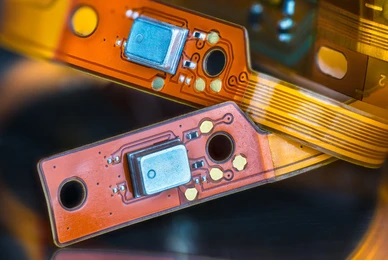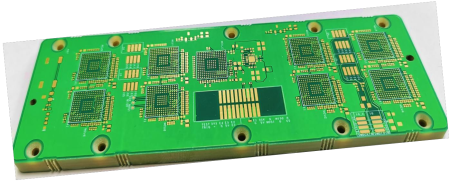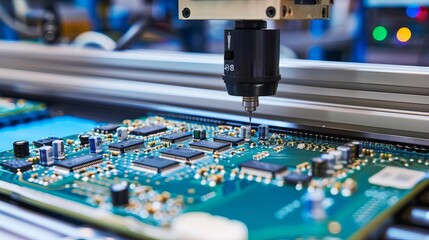- +86-755-23012705
- Building 3, Jinfeng Industrial Park, Fuyong Street, Baoan District, Shenzhen ,China
- [email protected]
In today’s fast-paced electronics industry, the demand for high-quality printed circuit board assemblies (PCBA) continues to grow. To meet this demand while staying competitive, manufacturers must focus on improving both the efficiency and quality of their PCBA production processes. Achieving these goals requires a combination of advanced technologies, optimized workflows, and a strong focus on quality control. In this blog, we will explore several strategies that can help improve both the efficiency and quality of PCBA production.
The foundation of any successful PCBA production starts with the design. A well-optimized PCB design can reduce production costs, improve assembly speed, and prevent common issues during manufacturing.
Design for Manufacturability (DFM) focuses on making the PCB design easier and more cost-effective to manufacture. By adhering to best practices in DFM, designers can ensure that the layout minimizes the number of layers, optimizes component placement, and avoids complex routing that can slow down the assembly process.
Component Selection: Using standardized components that are readily available in the market helps reduce procurement time and cost. Avoiding overly complex or rare components also prevents potential delays in sourcing parts.
By prioritizing DFM principles, manufacturers can significantly reduce the time spent on redesigns or modifications during the production process.

Automation plays a key role in improving the efficiency and consistency of PCBA production. Replacing manual labor with automated equipment can increase throughput, reduce errors, and lower labor costs.
Surface Mount Technology (SMT): SMT machines, such as pick-and-place machines, automate the process of placing components on the PCB. These machines are incredibly precise and can handle thousands of components per hour, which significantly speeds up the assembly process while ensuring high accuracy.
Reflow Soldering Machines: Reflow soldering is a crucial part of the PCBA process. By automating this step with advanced reflow ovens that have precise temperature controls, manufacturers can ensure that the soldering process is consistent, reducing the risk of cold joints, bridging, or other soldering defects.
Automated Optical Inspection (AOI): AOI systems are used to inspect the quality of the assembled PCBs. They can identify defects such as component misplacement, soldering issues, or missing components. By automating this inspection process, manufacturers can detect defects early, improving overall product quality.
Robotic Process Automation (RPA): Robotic arms or automated guided vehicles (AGVs) can be used to transport PCBs between different stages of production, improving workflow efficiency and reducing manual handling errors.
Quality control is paramount in PCBA production, and a robust quality management system (QMS) can help ensure that every unit meets the required standards. Several key quality control methods and tests can help ensure that only high-quality products reach the market:
In-Circuit Testing (ICT): ICT is used to test the functionality of the assembled PCB by checking for shorts, open circuits, and verifying component values. It is one of the most efficient ways to identify defects early in the production process.
Automated Optical Inspection (AOI): AOI, as mentioned earlier, is crucial for detecting assembly defects such as misplaced components or soldering issues. Combining AOI with X-ray inspection for hidden solder joints (e.g., BGA) allows for a thorough, non-invasive inspection of the assembly.
Functional Testing: Functional testing involves powering up the PCB and verifying that it works as intended. This test checks the functionality of the components and the overall circuit, ensuring that the assembly performs as required in its end application.
Environmental Stress Testing: To ensure the reliability of the PCBA in real-world conditions, manufacturers can use environmental tests like thermal cycling, vibration tests, and humidity testing. These tests simulate harsh operating conditions and help identify weak points in the assembly.

Lean manufacturing principles focus on eliminating waste and improving efficiency at every stage of production. By reducing unnecessary steps, material waste, and downtime, manufacturers can improve both efficiency and quality. Some lean practices that can be applied in PCBA production include:
Just-In-Time (JIT) Inventory: JIT reduces the need for large inventories by ensuring that components are delivered to the production line only when needed. This minimizes storage costs and reduces the risk of inventory obsolescence.
Continuous Improvement (Kaizen): Implementing continuous improvement strategies allows manufacturers to consistently evaluate and refine their processes. Small, incremental improvements can lead to significant gains in efficiency and quality over time.
5S Workplace Organization: 5S (Sort, Set in order, Shine, Standardize, Sustain) focuses on organizing the workspace to reduce clutter, improve efficiency, and reduce the risk of errors. A clean, well-organized production floor reduces downtime and enhances worker productivity.
Even with the best equipment and processes, the skill level of employees remains a key factor in ensuring high-quality production. Regular training programs help employees stay up-to-date on the latest technologies, industry standards, and best practices.
Training on New Technologies: As new equipment and software are introduced, training workers on how to operate and maintain these systems is essential for maximizing their potential. This also helps prevent costly mistakes that could arise from improper use.
Cross-Training: Cross-training employees in different areas of the production process ensures that there is flexibility in the workforce, reducing downtime when someone is unavailable or when bottlenecks arise in the production line.
With the rise of Industry 4.0, manufacturing processes are increasingly data-driven. By collecting and analyzing data from the production line, manufacturers can make informed decisions to improve both efficiency and quality.
Real-Time Monitoring: Implementing real-time monitoring systems allows managers to track key performance indicators (KPIs) such as production speed, yield rates, and defect rates. This data can help identify issues quickly and take corrective action before problems escalate.
Predictive Maintenance: Using data analytics to monitor equipment health can predict when machines are likely to fail. Predictive maintenance helps prevent costly downtime by addressing maintenance needs before a breakdown occurs.

Improving the efficiency and quality of PCBA production is a multifaceted challenge that requires a strategic approach. By optimizing PCB design, leveraging automation, enhancing quality control, implementing lean practices, training employees, and utilizing data-driven insights, manufacturers can significantly improve their production processes. These improvements not only increase throughput and reduce costs but also lead to higher-quality products that meet the ever-growing demands of the electronics market. By continuously evolving and adapting to new technologies and best practices, PCBA manufacturers can maintain a competitive edge in an increasingly complex industry.
Discover a World of Possibilities with XPCB Limited
At XPCB Limited, we’re here to help you explore new horizons. Our advanced PCB manufacturing, rapid prototyping, and turnkey PCBA solutions make it easy for you to turn your ideas into reality. Trust us to deliver excellence and reliability every step of the way. Join us and experience the power of innovation with XPCB Limited by your side.






XPCB Limited is a premium PCB & PCBA manufacturer based in China.
We specialize in multilayer flexible circuits, rigid-flex PCB, HDI PCB, and Rogers PCB.
Quick-turn PCB prototyping is our specialty. Demanding project is our advantage.
Tel : +86-136-3163-3671
Fax : +86-755-2301 2705
Email : [email protected]
© 2024 - XPCB Limited All Right Reserve
